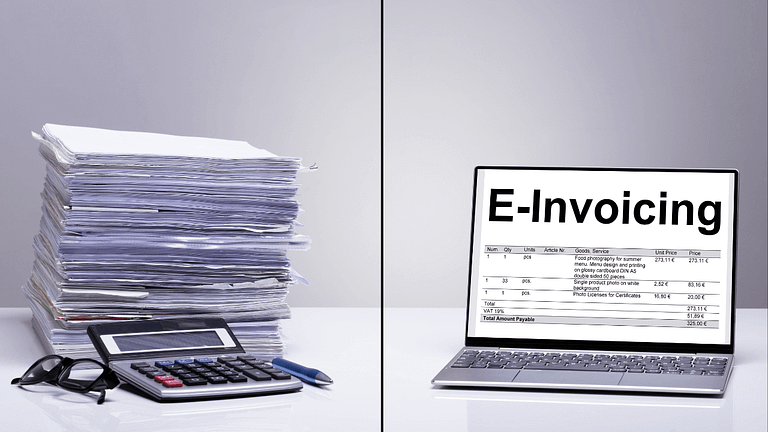Payment elections take how long to process? This question frequently arises among payroll administrators, finance departments, and employees changing their payment preferences.
The standard processing time ranges from 7-10 business days, though several factors can extend or shorten this timeline.
This comprehensive guide breaks down the exact timeframes, potential delays, and optimization strategies specifically for business owners and payroll managers seeking to streamline their payment operations.
1. The Standard Timeline: Payment Elections Take How Long to Process Typically
For payroll and finance managers tracking implementation schedules, the standard processing timeline for payment elections follows a predictable pattern:
| Processing Stage | Timeframe | Key Activities |
| Initial Submission | Day 1 | Employee submits payment election request |
| System Entry | Days 1-2 | Data entered into payroll system |
| Pre-note Verification | Days 3-7 | Bank account validation process |
| Confirmation | Day 8 | Final verification complete |
| First Payment | Days 9-14 | First payment using new election method |
This framework answers the basic question of how long payment elections take to process, but the actual timeline varies based on payment type, financial institution, and your company’s payroll cycle.
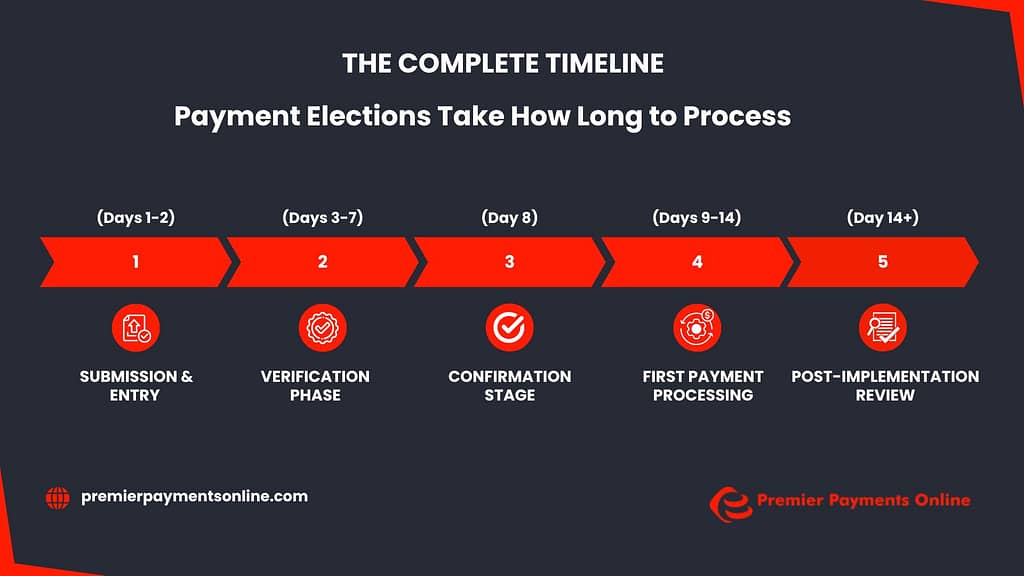
2. Different Payment Election Types and Their Processing Windows
The method employees select significantly impacts how long payment elections take to process:
1. Direct Deposit Processing Timeline
Direct deposit remains the most efficient payment election for businesses using electronic invoice systems:
| Processing Step | Timeline | Notes |
| Account Information Collection | Day 1 | Requires accurate routing and account numbers |
| Pre-note Testing | Days 2-5 | Zero-dollar test transactions sent to verify account |
| Account Verification | Days 3-7 | Bank confirms account validity |
| Payroll System Integration | Days 5-7 | Election entered into next payroll cycle |
| First Successful Deposit | Next pay period after verification | Typically 7-10 days total process |
Research from the National Automated Clearing House Association (NACHA) indicates that companies implementing ACH check acceptance programs experience 22% faster processing times for direct deposit elections.
2. Paper Check Election Processing
For employees choosing paper checks, the processing timeline differs substantially:
| Processing Step | Timeline | Notes |
| Election Submission | Day 1 | Employee selects paper check option |
| System Configuration | Days 1-2 | Updates to payroll distribution settings |
| Address Verification | Days 2-3 | Confirmation of mailing details |
| Check Printing Schedule Setup | Days 3-4 | Integration with check production systems |
| First Check Issuance | Next pay period | Typically 5-7 days total process |
Companies implementing in-store payment solutions often maintain both electronic and paper-based payment options, requiring dual system management.
3. Payment Card Activations
For businesses utilizing gift, loyalty, and payroll cards, the timeline includes additional steps:
| Processing Step | Timeline | Notes |
| Card Request Processing | Days 1-2 | Employee enrollment in card program |
| Card Production | Days 3-5 | Physical card creation |
| Card Shipping | Days 5-8 | Delivery to employee address |
| Card Activation | Days 8-9 | Employee activates received card |
| Fund Loading Configuration | Days 9-10 | System setup for recurring deposits |
| First Fund Loading | Next pay period | Typically 10-14 days total process |

3. Industry-Specific Factors Affecting How Long Payment Elections Take to Process
Different sectors experience varied processing timelines due to regulatory and operational requirements:
1. Healthcare Industry Payment Election Processing
Healthcare organizations face unique challenges that impact how long payment elections take to process:
| Industry Factor | Impact on Processing Time | Mitigation Strategy |
| HIPAA Compliance Requirements | +1-3 days | Implement PCI compliance testing |
| Multiple Facility Coordination | +2-4 days | Centralize payroll processing |
| Provider Credential Verification | +1-2 days | Pre-validate banking information |
| Insurance Payment Integration | +2-3 days | Separate from payroll processing |
Healthcare administrators report that implementing invoice processing for enterprise solutions reduces payment election processing by up to 35%.
2. Retail Sector Processing Considerations
Retail businesses with high employee turnover face different challenges:
| Industry Factor | Impact on Processing Time | Mitigation Strategy |
| High Volume of New Elections | +1-2 days | Batch processing implementation |
| Seasonal Employment Fluctuations | +2-3 days during peak seasons | Advance scheduling for seasonal onboarding |
| Multi-location Coordination | +1-3 days | Centralized processing systems |
| Part-time Employee Management | +1-2 days | Standardized election procedures |
Retail businesses using omni-channel payment solutions report 27% faster employee payment election processing due to unified system architecture.
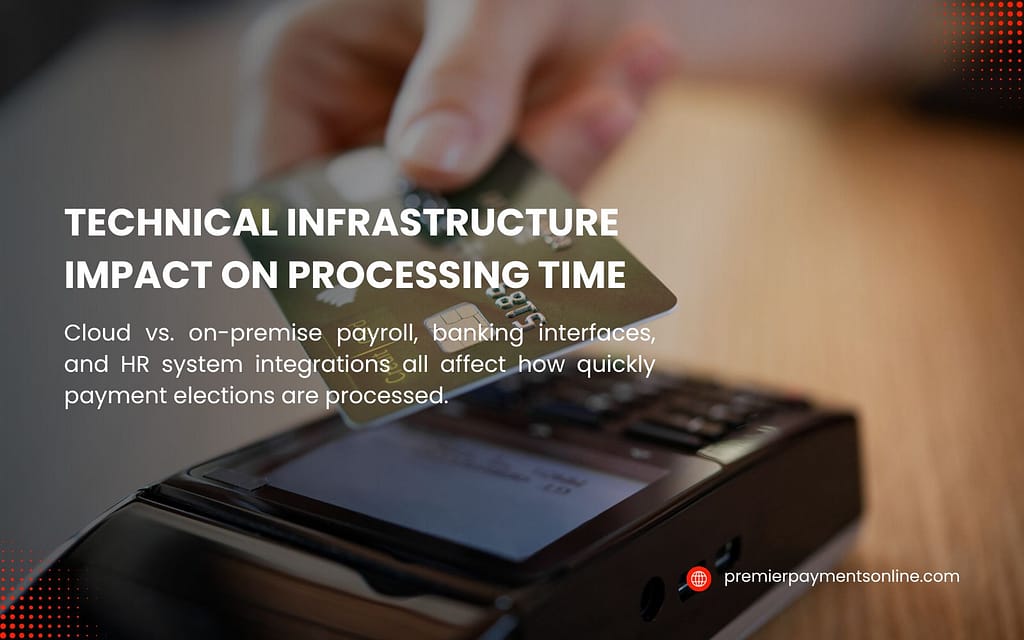
4. Technical Infrastructure Impact on Processing Time
Your organization’s technical setup significantly influences how long payment elections take to process:
1. Cloud-Based vs. On-Premise Payroll Systems
| System Type | Average Processing Time | Key Differentiators |
| Cloud-Based | 5-7 business days | – Real-time updates – Automated verification – Direct financial institution interfaces |
| On-Premise | 8-12 business days | – Manual verification steps – Batch processing requirements – Limited integration capabilities |
Organizations implementing enterprise invoice processing solutions alongside cloud payroll systems reduce processing times by an average of 38%.
2. Integration Points and Their Impact
The number of system integrations affects how long payment elections take to process:
| Integration Type | Additional Processing Time | Optimization Strategy |
| Banking Interfaces | +1-2 days | Direct API connections |
| HR Systems | +1-3 days | Unified HR/Payroll platforms |
| Accounting Software | +1-2 days | Automated data synchronization |
| Time & Attendance | +1-2 days | Real-time data transmission |
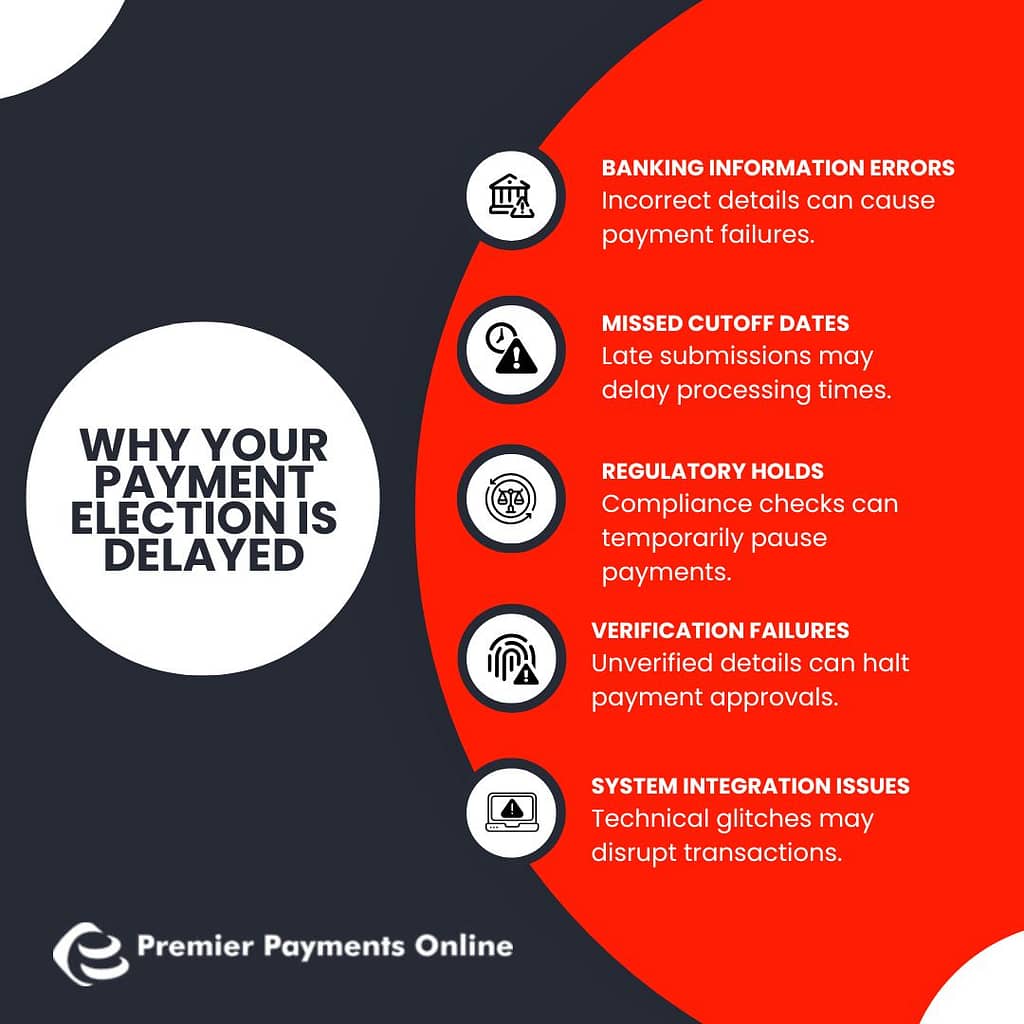
5. Common Delays: When Payment Elections Take Longer to Process Than Expected
Payroll administrators should prepare for these common issues that extend processing times:
1. Banking Information Errors
Approximately 72% of payment election delays stem from incorrect banking details:
| Error Type | Frequency | Additional Processing Time |
| Incorrect Routing Number | 31% | +3-5 days |
| Transposed Account Digits | 27% | +3-5 days |
| Account Type Mismatch | 14% | +2-3 days |
| Name Formatting Issues | 21% | +2-4 days |
| Closed Accounts | 7% | +5-7 days |
Businesses implementing risk and fraud management solutions can reduce these errors by up to 62% through automated verification.
2. Payroll Cycle Misalignment
When payment elections miss critical cutoff dates, significant delays occur:
| Scenario | Impact on Processing |
| Submission after payroll deadline | Delays until next payroll cycle |
| Mid-cycle changes | Processing deferred to following cycle |
| Year-end processing conflicts | Additional 5-7 day delay |
| Tax period transitions | Additional 2-3 day delay |
6. Ready to reduce your payment election processing time?
At Premier Payments Online, we specialize in streamlining payment operations for businesses of all sizes. Our tailored solutions can reduce payment election processing time by up to 40% while maintaining security and compliance standards.
Contact us today to discover how our billpay solutions can transform your payment election workflow and eliminate processing delays.
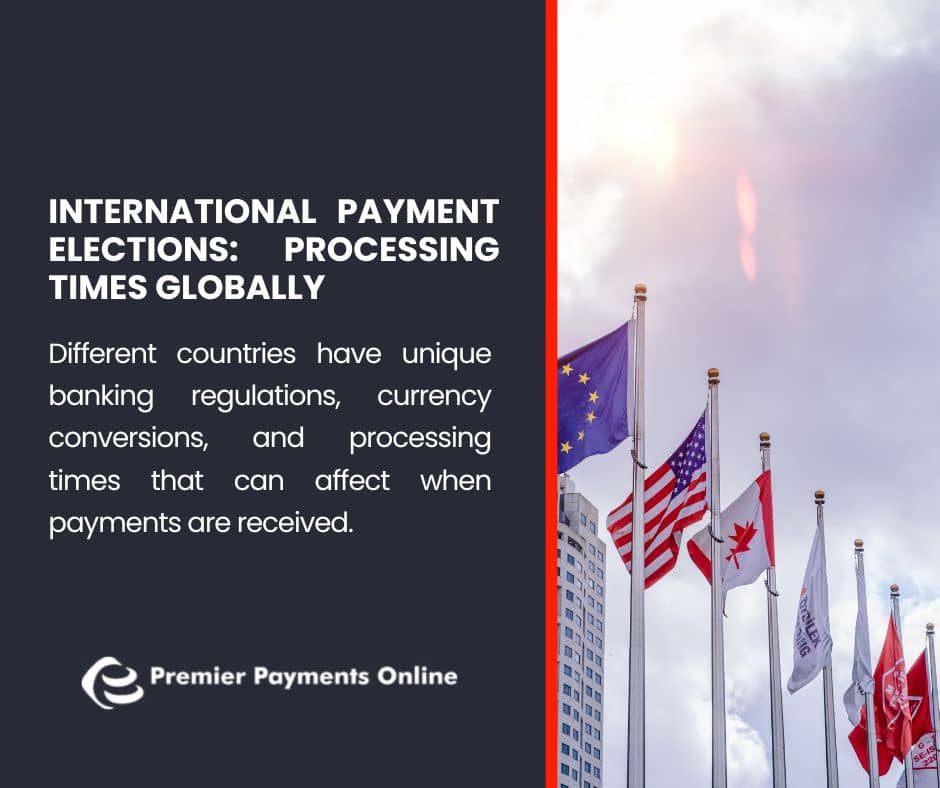
7. International Considerations: Payment Elections Take How Long to Process Globally?
For multinational organizations, international payment elections present additional complexities:
1. Country-Specific Processing Timelines
| Region | Standard Processing Time | Key Regulatory Factors |
| United States | 7-10 business days | NACHA regulations |
| European Union | 9-14 business days | SEPA compliance requirements |
| United Kingdom | 8-12 business days | BACS processing rules |
| Canada | 7-10 business days | Payments Canada guidelines |
| Australia | 8-12 business days | APCA regulations |
| Asia-Pacific | 12-18 business days | Varied country regulations |
| Latin America | 14-21 business days | Central bank clearance requirements |
Organizations maintaining attestation of compliance with international standards experience 29% fewer processing delays.
2. Currency Conversion Implications
Currency differences add complexity to how long payment elections take to process:
| Scenario | Additional Processing Time |
| Same Currency Elections | No additional time |
| Major Currency Pairs (USD/EUR/GBP) | +1-2 days |
| Secondary Currency Pairs | +2-4 days |
| Exotic Currency Pairs | +3-7 days |
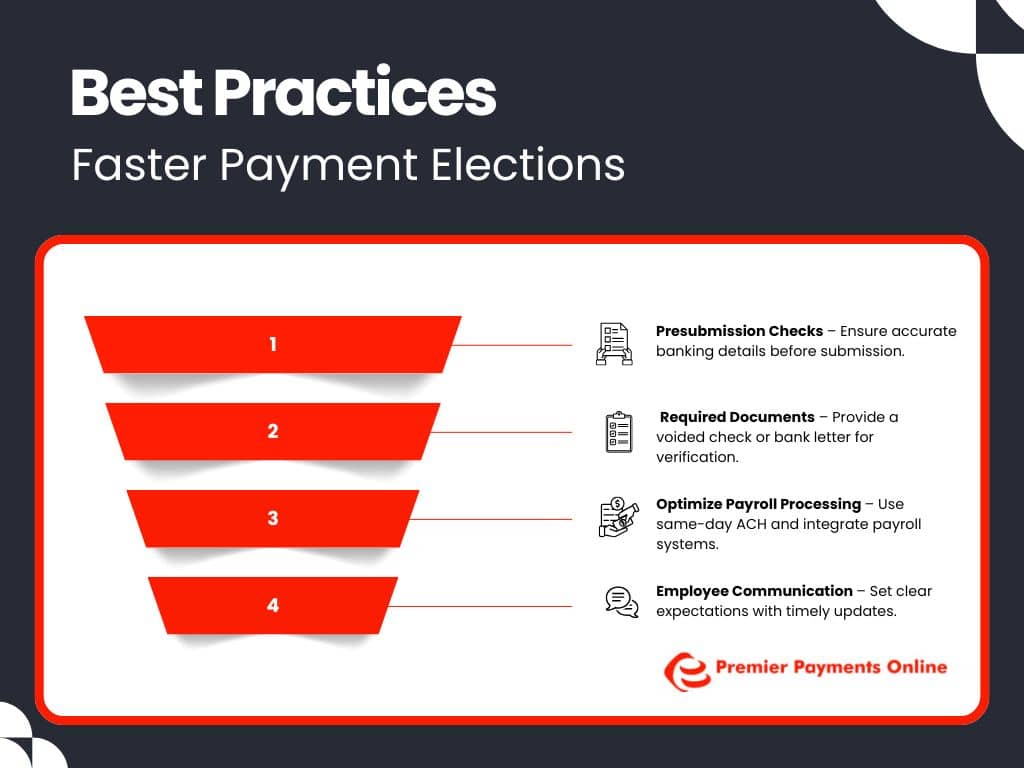
8. Best Practices For Reducing Payment Election Processing Time
Payroll managers can implement these strategies to minimize how long payment elections take to process:
1. Pre-Submission Verification Protocols
Implement these verification steps before submission:
- Automated routing number verification against Federal Reserve databases
- Account number format validation
- Account holder name matching
- Account type confirmation
- Bank holiday calendar integration
Organizations implementing comprehensive carrier invoice processing solutions alongside these protocols report 43% faster payment election processing.
2. Documentation Requirements That Speed Processing
| Document Type | Impact on Processing | Recommendation |
| Voided Check | Reduces time by 1-2 days | Require for all direct deposit elections |
| Bank Verification Letter | Reduces time by 1-3 days | Accept as alternative to voided check |
| Account Statement | Increases time by 1 day | Request only when other documentation unavailable |
| Bank Mobile App Screenshots | Variable impact | Only accept from recognized institutions |
3. Employee Communication Timeline
Setting clear expectations about how long payment elections take to process improves satisfaction:
| Communication Point | Timing | Message Content |
| Initial Confirmation | Within 24 hours of submission | Receipt of election request |
| Processing Update | Days 3-4 | Verification status update |
| Pre-note Completion | Day 5-7 | Account verification results |
| Final Confirmation | Day 7-8 | Expected date of first payment |
| Post-Implementation | After first payment | Confirmation of successful processing |

9. Technology Innovations Reducing How Long Payment Elections Take to Process
Recent advancements are accelerating processing timelines:
1. Same-Day ACH Impact
The introduction of Same-Day ACH processing has reduced verification timeframes:
| ACH Processing Type | Verification Window | Requirements |
| Standard ACH | 3-5 business days | Standard submission |
| Next-Day ACH | 1-2 business days | Early cutoff submission |
| Same-Day ACH | 0-1 business days | Premium processing fees |
Businesses concerned about security can implement PCI DSS compliance measures alongside accelerated ACH processing.
2. Blockchain-Based Verification Systems
Emerging blockchain solutions are revolutionizing how long payment elections take to process:
| Implementation Stage | Processing Time Reduction | Adoption Rate |
| Early Adoption | 30-40% | 8% of organizations |
| Partial Implementation | 20-30% | 17% of organizations |
| Full Integration | 40-60% | 3% of organizations |
10. High-Risk Industry Considerations
Organizations in high-risk industries face additional scrutiny affecting how long payment elections take to process:
| Industry | Additional Processing Time | Key Compliance Factors |
| Gaming/Gambling | +3-5 days | KYC requirements |
| Cannabis | +5-7 days | Banking restrictions |
| International Trade | +4-6 days | OFAC screening |
| Financial Services | +2-4 days | Enhanced due diligence |
High-risk merchant businesses benefit from specialized processing solutions that address these industry-specific challenges.
Conclusion: Planning Your Payment Election Processing Strategy
Understanding how long payment elections take to process allows payroll managers and finance departments to:
- Set accurate employee expectations
- Schedule transitions between payment methods
- Minimize disruption during system changes
- Implement efficient verification procedures
- Reduce payroll support inquiries
By implementing the strategies outlined in this guide, your organization can reduce payment election processing times while maintaining security and compliance with financial regulations.
For businesses seeking to optimize payment operations further, implementing comprehensive payment processing solutions that address each stage of the payment election lifecycle can significantly reduce processing times while enhancing security and employee satisfaction.









